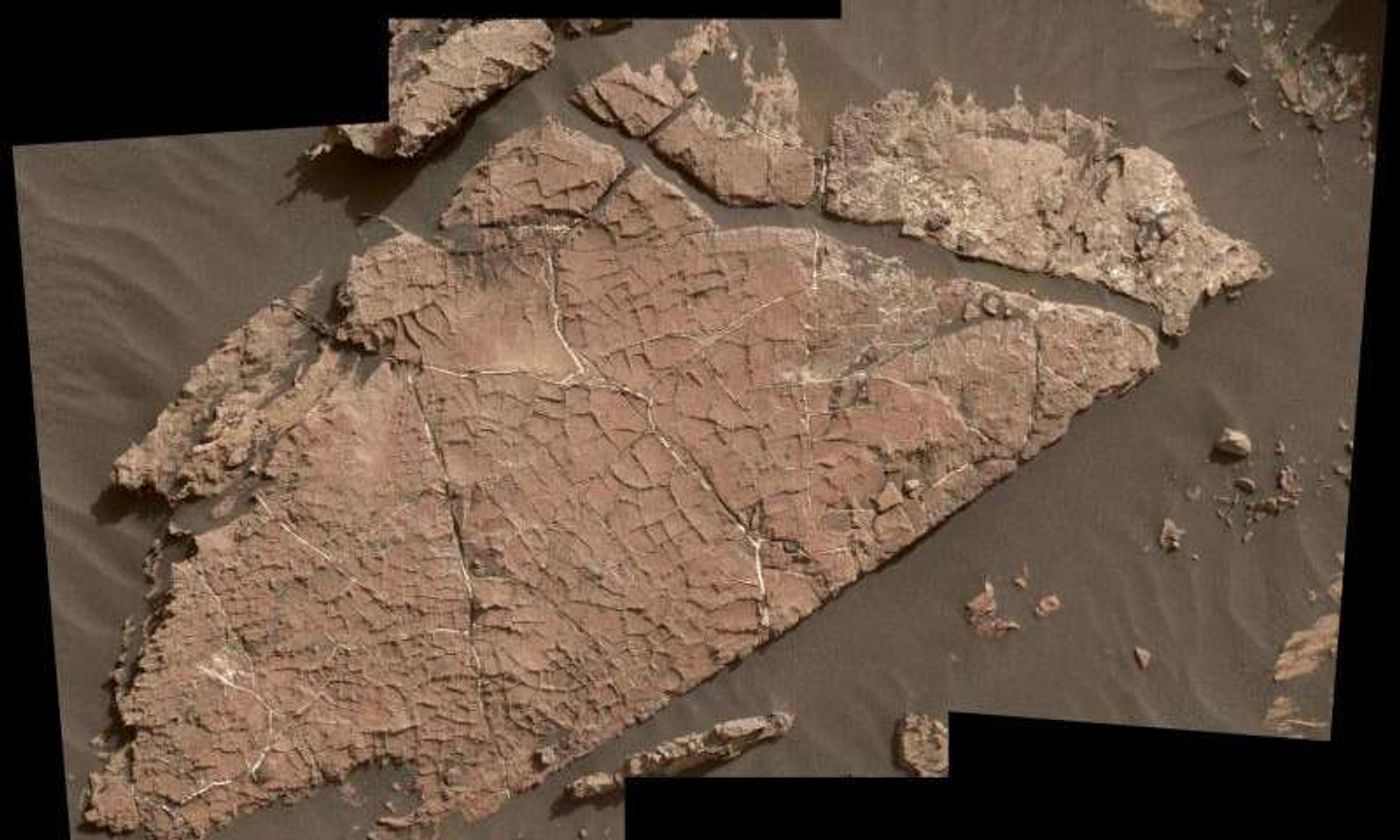Curiosity Rover Discovers Mud Cracks on Mars
Curiosity is just one mankind’s many robotic explorers that has been sent to Mars to help observe the planet’s surface with the goal of unlocking the planet’s past and finding out more about whether or not it can support alien life.
While we’ve come up blank with much of the search for life, NASA has been confident of what they say is evidence of flowing water on Mars, and they also think Mars might have enough water trapped in its surface to use for a human habitation dome for when we finally send mankind there.
On the other hand, a curious picture sent in by the Curiosity rover shows what appears to be cracked mud, possibly even more evidence that water once existed on the red planet.
Image Credit: NASA/JPL-Caltech/MSSS
According to NASA, the cracked slab, which measures about 3 feet across, may be remnants of mud that existed nearly 3 billion years ago and cracked from the heat.
There are polygonal patterns on its surface that look a lot like the same cracked mud you’d expect to see right here on Earth in places like Arizona, where the ground often dries up and cracks from the extreme heat in the Summer.
“Mud cracks are the most likely scenario here,” said Curiosity science team member Nathan Stein. “Even from a distance, we could see a pattern of four- and five-sided polygons that don't look like fractures we've seen previously with Curiosity. It looks like what you'd see beside the road where muddy ground has dried and cracked.”
Without much surprise, NASA sent Curiosity in to investigate further, and found two specific kinds of cracks in the slab: 1) a type of crack that fills with windblown sand; and 2) a type of crack that’s caused by accumulating sediments via running water that create pressure from hardening.
“If these are indeed mud cracks, they fit well with the context of what we're seeing in the section of Mount Sharp Curiosity has been climbing for many months,” said Curiosity Project Scientist Ashwin Vasavada of NASA's Jet Propulsion Laboratory in Pasadena. “The ancient lakes varied in depth and extent over time, and sometimes disappeared. We're seeing more evidence of dry intervals between what had been mostly a record of long-lived lakes.”
Scientists have also reportedly found evidence of rough flowing waters, consistent with what could have been river-like activity in the region.
Curiosity Rover has learned a wealth of possible useful information from this site, but it’s now moving on to a new spot where we can learn more about the red planet. It should be interesting to see if we spot any more of these incredible, mind-boggling discoveries.
Thanks to a recent software update, Curiosity can now automatically target things on the planet without any human intervention, which is incredibly helpful.
Source: Phys.org









